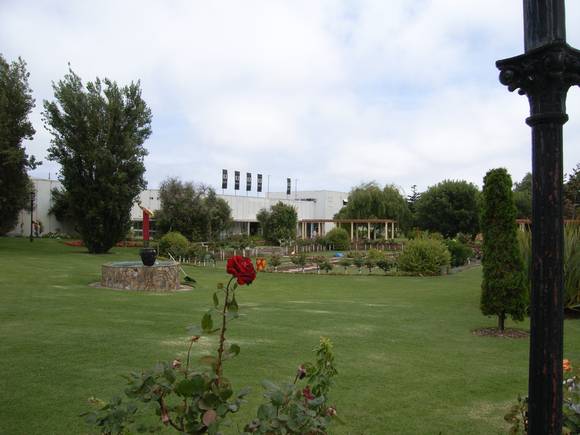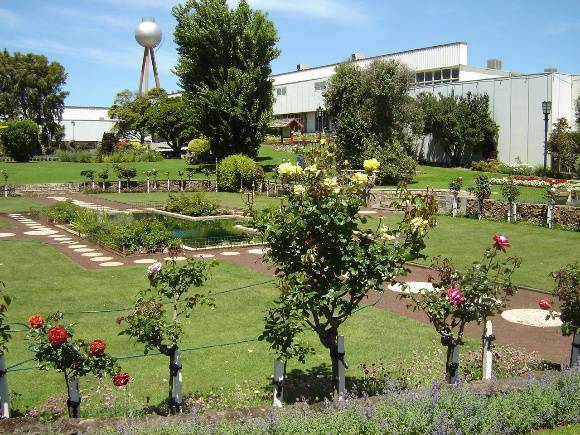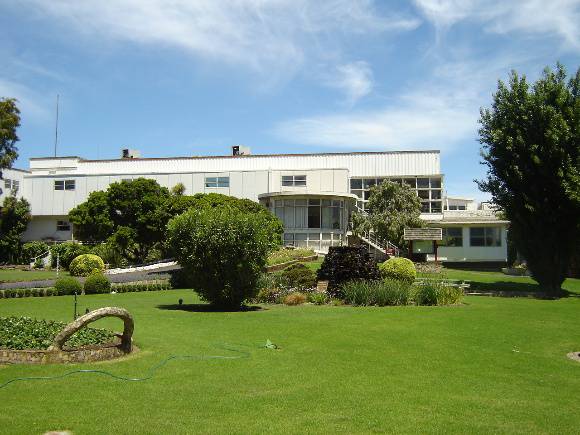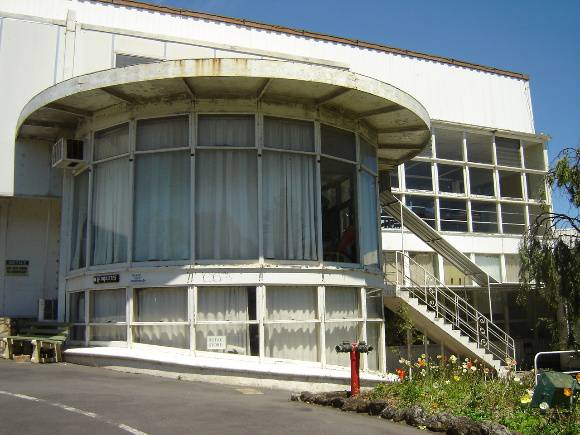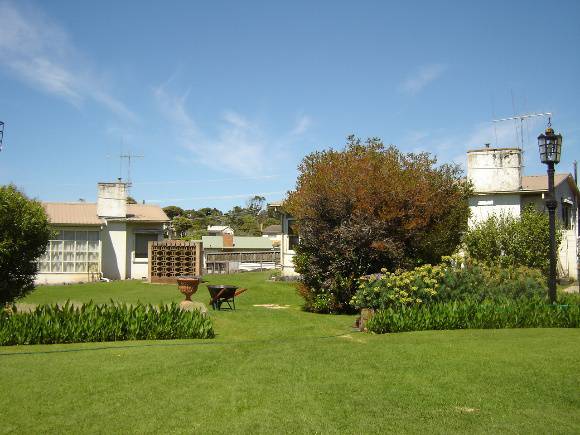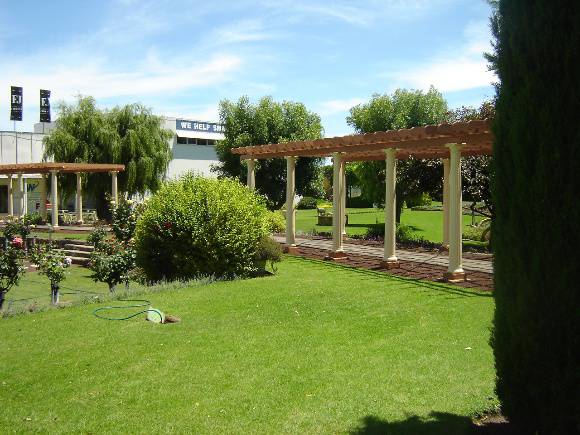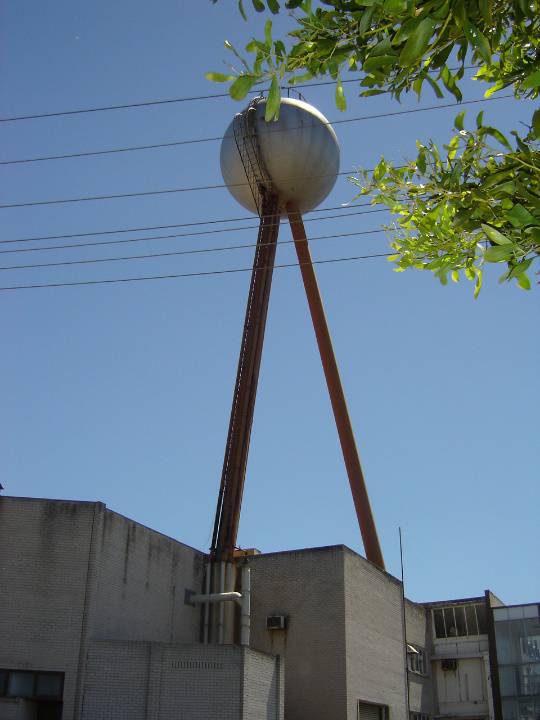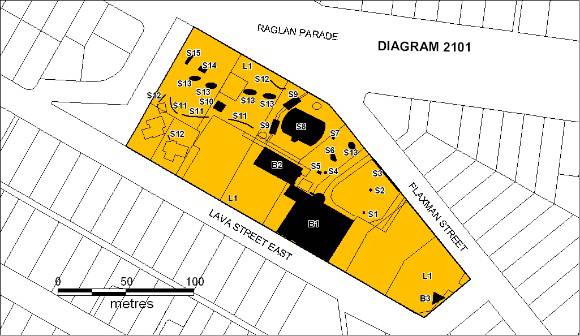| Back to search results » | Back to search page » |
|
FLETCHER JONES FACTORY AND GARDENS
Statement of Significance
What is significant?
The Fletcher Jones Factory and Gardens were established in 1948 by David Fletcher Jones in Warrnambool. His "Modern New Decentralised Garden Factory" was a result of growing demand and advanced views of employee satisfaction and engagement. The company became renowned not only for the quality of its clothing - an iconic Australian brand - but also for Fletcher Jones' progressive approach to employer/employee relations and an innovative shareholding scheme.
The development of manufacturing industries in regional centres occurred through decentralisation initiatives following the Second World War. Due to post-war shortages of building materials, Fletcher Jones bought a number of war surplus structures from the Army camp at Darley. Forming the basis of the new factory, these buildings were used as cutting rooms, sewing rooms, and a canteen. Fletcher Jones also purchased aeroplane anchors and heavy airways concrete blocks to be used as fencing and garden borders/features. In 1949 a Quonset hut was acquired and used to house a dry cleaning plant and alterations department. In 1951 a Bristol building was erected on the site adjacent to the original canteen and housed the mail order and accounts departments.
In 1947 Fletcher Jones commissioned W.J.T. (Tag) Walter to create a modernist facade to the series of Darley buildings. Common features which were repeatedly used as advertising symbols were the Fletcher Jones (FJ) man and the roundel. The roundel had been used since the 1930s, and this feature exists on a pillar of the concrete anchor fence and the Lava Street elevation of the sewing room. A central tower featuring the FJ man and the roundel was built between the canteen and the cutting room, which was the location of Fletcher Jones' office. An illuminated advertising sign was placed adjacent to his office above the canteen and a curved glazed corner entry was installed between the tower and cutting room wing. However, this entry has been significantly altered and the tower above the first floor level has been removed, as has the signage.
Between 1951 and 1974 the factory had numerous alterations and extensions. Two significant features were the Round Room and the water tower. The Round Room was a prominent feature of the main facade, built in 1951as an addition to the original canteen. The 40 metre high water tower was built for fire protection and as a booster system in 1967. The tower's massive concrete foundations extend through the building and the elevated steel tripod and steel spherical tank tower over the complex.
Fletcher Jones established an attractive ornamental garden setting for his employees. Work commenced in 1949 and the gardens were extended to the west in 1951. The gardens quickly became popular among employees, local residents and tourists. The highly manicured landscape consists of flower beds, lawn, rockeries, pergolas, a sunken garden and pond and several large floral baskets. Also located in the garden are a variety of sculptures, including a basalt sculpture designed by Warrnambool artist Robert Ulmann as a memorial to Fletcher Jones. Other sculptures include the Fletcher Jones man, a bas relief sculpture of a man clad in permanent press trousers and shirt, and the Sphere and Trilon sculpture, copied from the 1939 New York World Fair, which Fletcher Jones regarded as a symbol of progress.
Even though the company expanded its operations to other sites, the Warrnambool complex remained the administrative and production hub of the company for many years. Fletcher Jones was knighted in 1974 for his services to decentralisation and the community.
How is it significant?
Fletcher Jones Factory and Gardens are of historical, social and aesthetic significance to the State of Victoria.
Why is it significant?
Fletcher Jones Factory and Gardens are of historical and social significance because of Fletcher Jones' progressive approach to employee benefits and the firm he founded, Fletcher Jones & Staff Pty Ltd. He introduced an innovative scheme of shareholding and other progressive initiatives and services based on co-operative and consultative principles - termed the 'FJ Family' by the company. The degree of staff involvement in the company is unusual in the history of Australian business. The company's distinctive ethos is reflected in the extensive and ornamental garden established for the enjoyment of staff and local residents.
The Fletcher Jones Factory is of historical and social significance as one of the largest clothing manufacturers in Australia; its iconic Australian brand; its contribution to the 20th century manufacturing industry in Australia; and for the unusual and successful integration of surplus military structures, buildings and modernist facade in a factory setting. They reflect the resourcefulness and dynamism of Fletcher Jones in the use of war surplus structures and objects during a time of building material shortages. Throughout the complex are reflections of the post-war growth in population and in the manufacturing industry, and the Federal Government's support of decentralisation.
The 1967 water tower is of social significance as a distinctive and visible feature, the design of which transforms a structure performing a utilitarian function into a structure of landmark prominence. The tower represents a clever use of a restricted site which did not allow for a traditional four-legged base.
The Gardens are of aesthetic significance as a rare and outstanding example of a mid-twentieth century ornamental garden created in an industrial setting. The manicured lawns complement the sculptures, landscape structures, water features, rockeries, pergolas, urns, 'Monier' seats, flower baskets and beds with colourful and intricate displays of annual bedding plants. The planting features contrasting forms, foliage and colour with the use of uncommon vegetation such as Kentia Palms, strap leaves and weeping plants. Other distinctive features are the plants which are clipped into hedges, squares and balls. The planting was intricate and colourful, and maintained to the highest horticultural standards where neatness and control ruled. This style became a model for many small, post-war suburban gardens.
Group
Manufacturing and Processing
Category
Factory/ Plant


